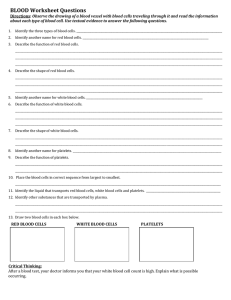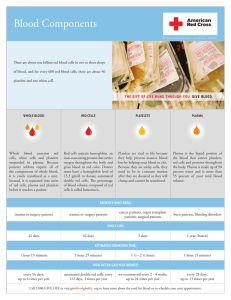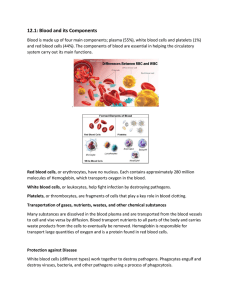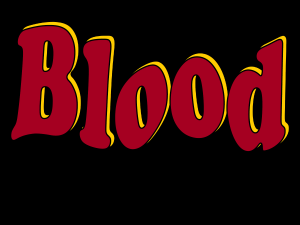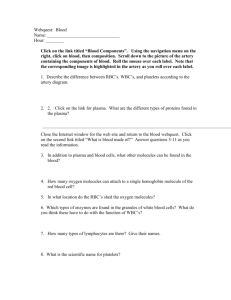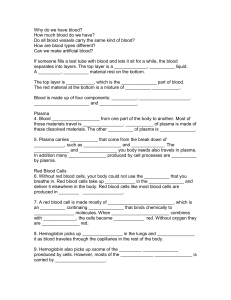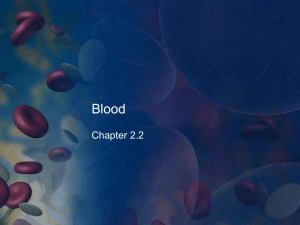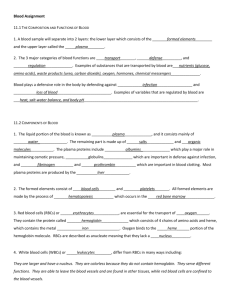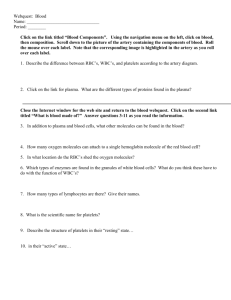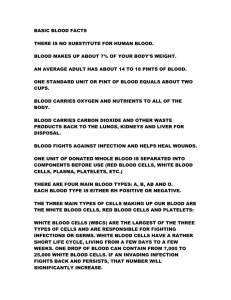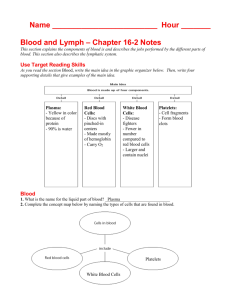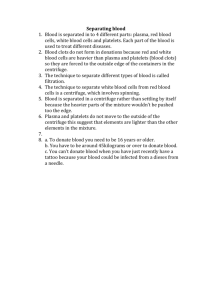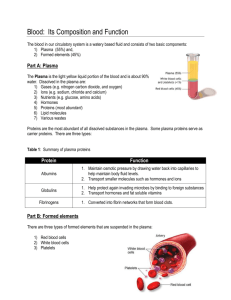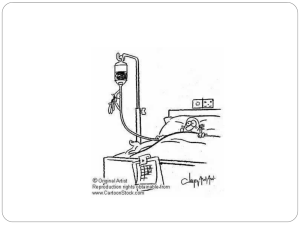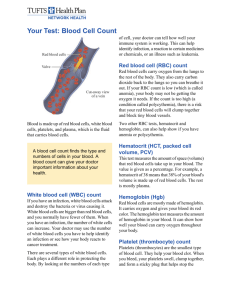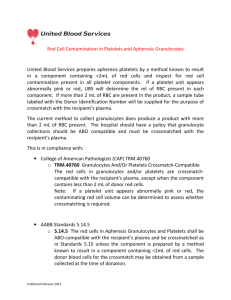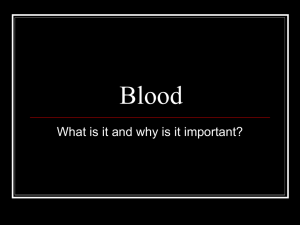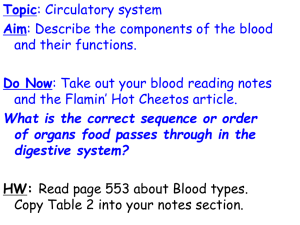Blood is a circulating connective tissue. It is made of a fluid called
advertisement
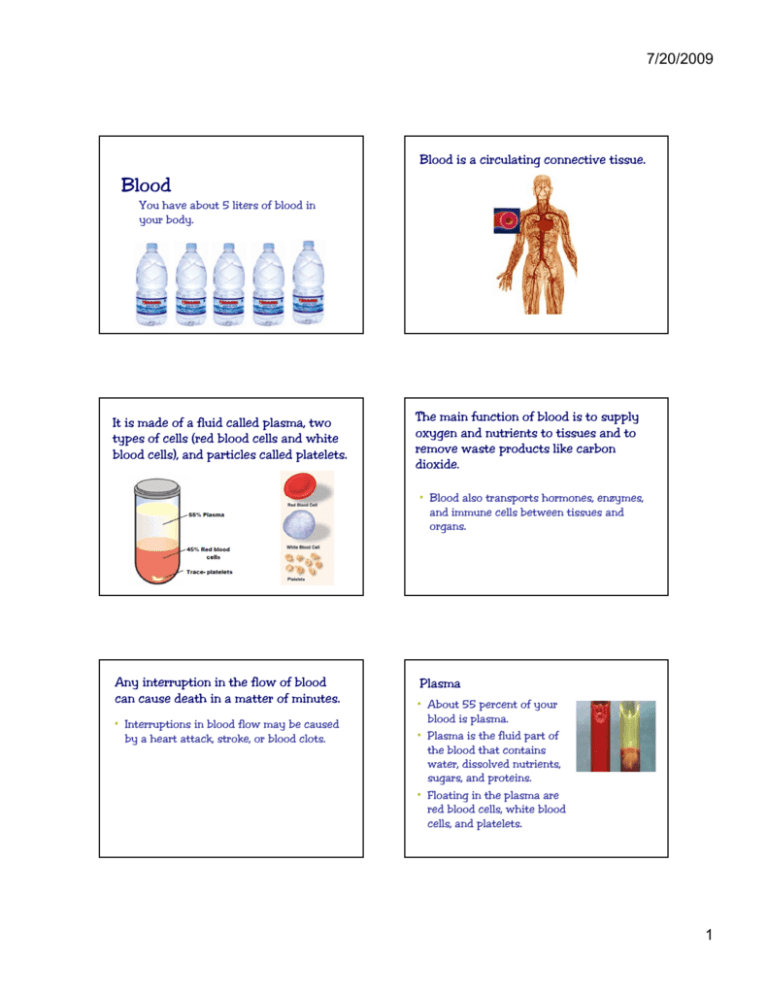
7/20/2009 Blood is a circulating connective tissue. Blood You have about 5 liters of blood in your body. It is made of a fluid called plasma, two types of cells (red blood cells and white blood cells), and particles called platelets. The main function of blood is to supply oxygen and nutrients to tissues and to remove waste products like carbon dioxide. • Blood also transports hormones, hormones enzymes, enzymes and immune cells between tissues and organs. Any interruption in the flow of blood can cause death in a matter of minutes. • Interruptions in blood flow may be caused by a heart attack, stroke, or blood clots. Plasma • About 55 percent of your blood is plasma. • Plasma is the fluid part of the blood that contains water, dissolved nutrients, sugars, and proteins. • Floating in the plasma are red blood cells, white blood cells, and platelets. 1 7/20/2009 Red blood cells White blood cells • About 45% of your blood is made of red blood cells. • Red blood cells transport oxygen yg to your y cells. • Red blood cells are red because of a pigment called hemoglobin. • Hemoglobin grabs onto the oxygen molecules you inhale and carries them to your cells. • White blood cells and platelets make up a tiny fraction of your blood. • White blood cells are p part of your y immune system. • They help fight infections by destroying invaders like bacteria and viruses. • Some white blood cells engulf invaders. • Others produce antibodies that destroy invaders. Platelets People have different blood types. • Platelets are particles that prevent blood loss. • When you cut or scrape your skin, skin platelets clump together in the damaged area and form a “plug.” Platelets Pl t l t stained purple. • A blood type is based on the presence or absence of two proteins (A, B) on the surface of red blood cells. • There are four possible blood types (ABO groups): – Type A - Only the A protein is present. – Type B - Only the B protein is present. – Type AB - Both proteins are present. – Type O - Neither protein is present (about 40% of the population). 2

